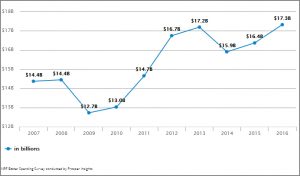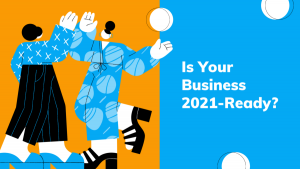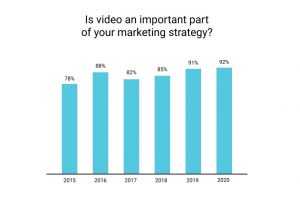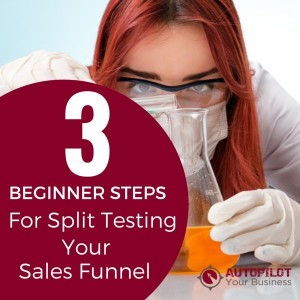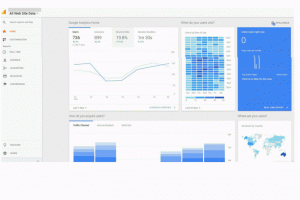With a plethora of new marketing automation companies entering the scene, and big players like HubSpot recently going public, it’s no wonder that the blog articles and online advice for using email marketing to drive revenue online. While the same terms were relatively rare on marketing blogs even a few short years ago, I now hear terms like “back-end” and “funnels” all the time.
Instead of focusing on a particular email marketing “tactic” – such as subject lines or merge fields – I decided to focus on a big-picture topic that would give eCommerce marketers a serious leg up on the competition.
How To “Frame” Your Customers For The Perfect Sale In Your Emails & Marketing Systems
Fundamentally, there are two parts to this article:
- Pre-Frame: Everything that happens before the “opt in”
- Post-Frame: Everything that happens after the “opt in”
Smart marketers and, therefore, wealthy marketers, are the ones who place high attention to detail on both (not just before, not just after)…
…And figure out ways to leverage the two to work in tandem; creating in your prospects both the appetite for your product and the opportunity to quench that appetite through buying whatever it is your sell.
Let’s get started.
The Pre-Frame: How To Extract More Profit With Less Effort
The goal for me is to increase the ratio between effort and results. It’s another way of saying that, in my marketing, I am after leverage. More “doing” won’t always bring about the desired result. It just so happens that one of the most leverage-able ways to beef up this ratio between effort and results is the “Pre-Frame.”
There’s a legend of a fisherman, named Captain John Rade, who I believe said it best. When asked how he caught so many fish (literally hundreds of pounds of fish per day), he grudgingly shared his secret:
“Don’t Think Like A Fisherman, Think Like A Fish”
Now you’ve probably heard something similar to this before, but we’re going to expound upon it today by talking about this “Pre-Frame” principle. I mention Captain Rade because, in truth, this is the entire basis of good marketing: in order to “catch the most fish” (or acquire the most customers), you must reduce the friction between where your customer is currently, and where you want them to be.
And the only way to effectively do this is by understanding where they are (objections, fears, desires, problems, etc) and what must happen to move (or attract) them to where you want them to be.
It’s in an attempt to reduce the conversion friction that we set up our Pre-Framing the way we do…
Imagine this scenario… You are taken to a news-story page that describes the tale of a recent mugging. It’s about a father who was unable to defend his two daughters from a street robbery in a town close to where you live. His only regret was not being better prepared to protect his family.
After reading this story, you are taken to a page where you can receive free self defense tips, so you’ll always be prepared for whatever happens.
In this example lies the power of the “Pre-Frame.” Often times, the only thing more important than what’s on the sales or marketing page, is what the prospect saw just before seeing your marketing. It’s called “priming,” and it’s one of the most powerful concepts you can use to “reduce the friction” between where your prospect is, and where you want them to go.
In this story, there are several things at play, and I want to point them out so you do not miss them:
1. “Reason Why”
In your landing page and your emails, it’s important to reinforce and remind your prospects “why” they care (or should care) about whatever it is you are offering them. In the example above, you’ve done so with a story, eliciting the fears or negative pressures of your market in an attempt that they will take action in order to avoid it.
2. “Bridging”
Once you’ve clearly painted the reason “why” they care, you need to “link up” the next step you want your prospect to take as the way “out of” their fear, or “towards” their desire. (See why “thinking like a fish” is so important? You must know these fears, desires, and objections like they were your own).
3. “Set Clear Expectations”
This is where you lay out exactly what will happen once they take the desired action. One important note here is to give your “thing” a unique value proposition. I have a friend who calls this “showing up different,” i.e. clearly being unique in a beneficial way that makes people focus on your offer as an opportunity, not a commodity. Don’t just say, “Get Free Self Defense Tips Here.”
If the prospect can go Google it and find competition, you lose. Give it a name or some unique aspect that only you have in order to keep the perceived value high. (For example, My “Fast Frame” technique, the thing I’m explaining to you now, is unique to me… if I just said “Learn How to Sell More Stuff,” it wouldn’t be unique).
At this point, you’re probably wondering why this article is halfway finished and we haven’t even gotten into the main topic: email. That’s because if you don’t have your framing systems set up properly, you severely inhibit the positive results email marketing can generate for you.
Without further adieu, let’s dive in.
The Post-Frame: Creating Your Email Machine Fly Wheel
Once your prospect takes action and opts in to your list, the first thing you want to do is reinforce the decision they’ve just made… quite frankly, they’ve taken a risk giving you their contact information, and you want to honor that and show them what a wonderful decision it was.
This, more than anything, elicits trust from your market. On your “Thank You” page, remind them what you promised them, the benefits they are not entitled to as a member or subscriber to your business, and make them feel great for taking action.
Now, once they receive your email, they are going to be reading through it with anticipation. The hardest thing to get from your prospects is their attention, and if you do this right, you will have their attention safely secured before they even receive your first email. In this email, you want to deliver what you promised them, and (AGAIN) reinforce their decision. Although this can also be done with follow-up email offers and related products, today we’ll focus on the immediate thank-you page and delivery emails (under-appreciated marketing assets to say the least).
Marketing is best described in terms of “rhythm.” Like a nice blues piece, we are going to loop through several iterations of the same tune, perhaps slightly different but with the same structural pieces, several times – just to make sure it is fully digested and properly enjoyed.
Then, you want to (again) pre-frame the future benefits to come in your upcoming marketing messaging. It’s important to not give them everything in one, long-winded, fatal swoop. This kills the “attraction” process that all good marketing possesses. It’s a bit of a “tease” here, and you want to simply deliver on what you promised and elicit desire for future communications.
It’s important to steward the trust that your prospects have just shown you by opting in to receive emails from you. Because of this, go ahead and make your delivery of promise easily seen and accessible. I see marketers sometimes make people read the entire email and scroll all the way down to the bottom “P.S.” to download what they were promised in the landing page.
To me, this does not reinforce the trust of the consumer, as they are made to work extra hard just to claim what should be easy. Besides, there are much better uses of a “P.S.” than delivering free reports… such as, getting them excited and looking forward to receiving your next email!
How do you get them excited about your next email? Pre-Frame the benefits that they’ll get when they get your email! Once you understand this powerful concept of pre-framing, a whole world, previously inaccessible except to the greatest marketing minds among us, will be unlocked right before you.
Email Copywriting “Brass Tacts”
Joe Sugarman (a famous marketer) once said that the only job of a good headline is to get the sub-headline read. And the only job of a good sub-headline was to get the first sentence read. So forth and so on through the entire letter, all the way down to the call to action. In the same way, the only job of the email subject line is to get the sucker OPENED.
(KISSmetrics wrote this blog about Joe Sugarman’s legendary copy, and it’s worth a read.)
And in doing so, the only job of the first sentence is to get them to KEEP READING. All the way until you reach the final sentence of the email. And the job of the final sentence is to?
Get Them To Read The NEXT Email.
With that first subject line, it’s important to make it easily identifiable as your brand. This is because they exhibited trust in you, and you want to reinforce that in your subject line… thus increasing the chances that they’ll open your email. Once they open, they will see their promised item (this is whatever you promised them in the landing page), and a quick note about the benefits they just gained access to by signing up for your emails. (You can find a quick overview of strategy at every stage of the email marketing process in this article).
Final Thoughts
Simple. These concepts are very simple. When you are sitting down to write your emails, create your offers, put together your landing pages, remind yourself that it really is simple: think like the fish. Captain Rade figured out that fish eat the same thing and there’s no use buying a new bait every season…
“New bait is for attracting fishermen, not fish,” he’d say. Because he knew what his fish liked… and he capitalized on it. You do the same. What is it your customers and prospects want – no, need?
Identify this, and identify the fears and objections standing in their way, and you can put together marketing that attracts and compels them forward through your sales systems. Of course, for more in-depth help on this topic, I’d be happy to help. Let’s talk about it in the comments below, and happy fishing!
Digital & Social Articles on Business 2 Community(118)
